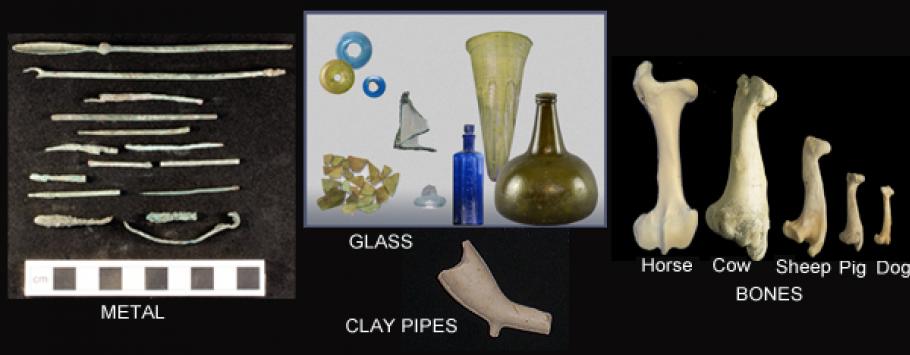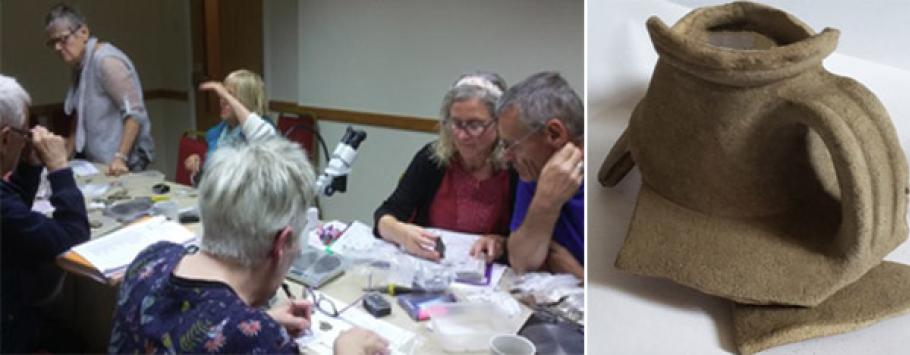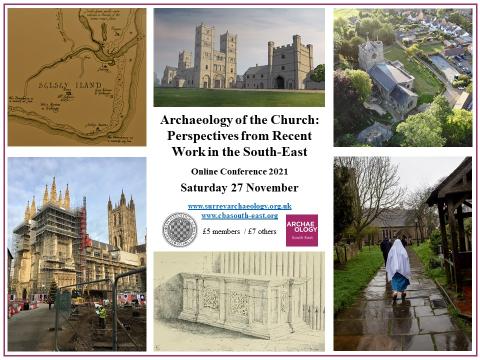MSF Newsletters
The MSF issued 17 newsletters which are available below:
Medforum 17 - July 2021
Later medieval material culture glimpsed through legal records: bother in Rotherhithe
Book reviews

1066-1600
The MSF issued 17 newsletters which are available below:
Later medieval material culture glimpsed through legal records: bother in Rotherhithe
Book reviews
On Thursday 16 December at approximately 19:00, the MSF AGM will be preceded by an online Zoom lecture from James Wright FSA on ‘The Folklore and Archaeology of Historic Buildings’. James, a buildings archaeologist and historic stone specialist, will explore some of the most common misconceptions surrounding historic buildings, outlining the legends, explaining the origins of the myths and revealing the underlying truth behind each story to understand a little more about their former occupants.
The Medieval period AD 1066-1485
Medieval archaeology developed comparatively late as a discipline, with antiquarian focus largely on the artworks and architectural ruins. As a period which saw an increasing amount of valuable historical sources however, material evidence can be evaluated alongside documentary, placename and landscape studies, whether in traditional areas – e.g. castles – or new topics of research, such as production, exchange and gender studies.


This year's annual Surrey Historic Environment Research Framework will be held jointly with the Council for British Archaeology South-East annual conference and themed around the subject of church archaeology. The event will be a one-day virtual conference held online, via Zoom video conferencing.

A survey of 51 churches and their medieval graffiti was undertaken by Abigail Coskun as part of her Durham University undergraduate dissertation, entitled 'Life and Death, Demons and Devotion: the Medieval Graffiti of Surrey’s Parish Churches'.
In recent years, the early inscriptions and carved artworks in churches have become the subject of large-scale surveys, not least for the fascinating pictures which are represented - heraldic designs, word puzzles, ships, architectural plans, figural scenes and cartoons, etc - and the insight they shed on the artists themselves. This online study day will look at recent studies of medieval graffiti in both Surrey and Kent, focusing not only on some of the captivating scenes which have been discovered, but the methodologies involved in undertaking such work.
The Medieval Studies Forum will be holding their annual general meeting online this year, via Zoom, which will be preceded by a free special lecture by Dr Ben Jervis (Cardiff Univ) on 'The Material Culture of Medieval Rural Households'.
The talk will last for about 45 minutes, to be followed by questions and a short break. The AGM will start approximately at 1130 and is open to all MSF members.
Watching brief by G Potter of CA. No significant archaeological remains were found but the fieldwork produced a small amount of earlier building material and pottery, some of it (floor tile and worked stone) almost certainly associated with the abbey.